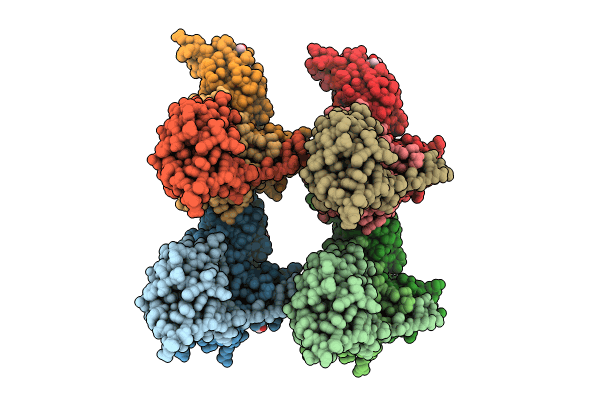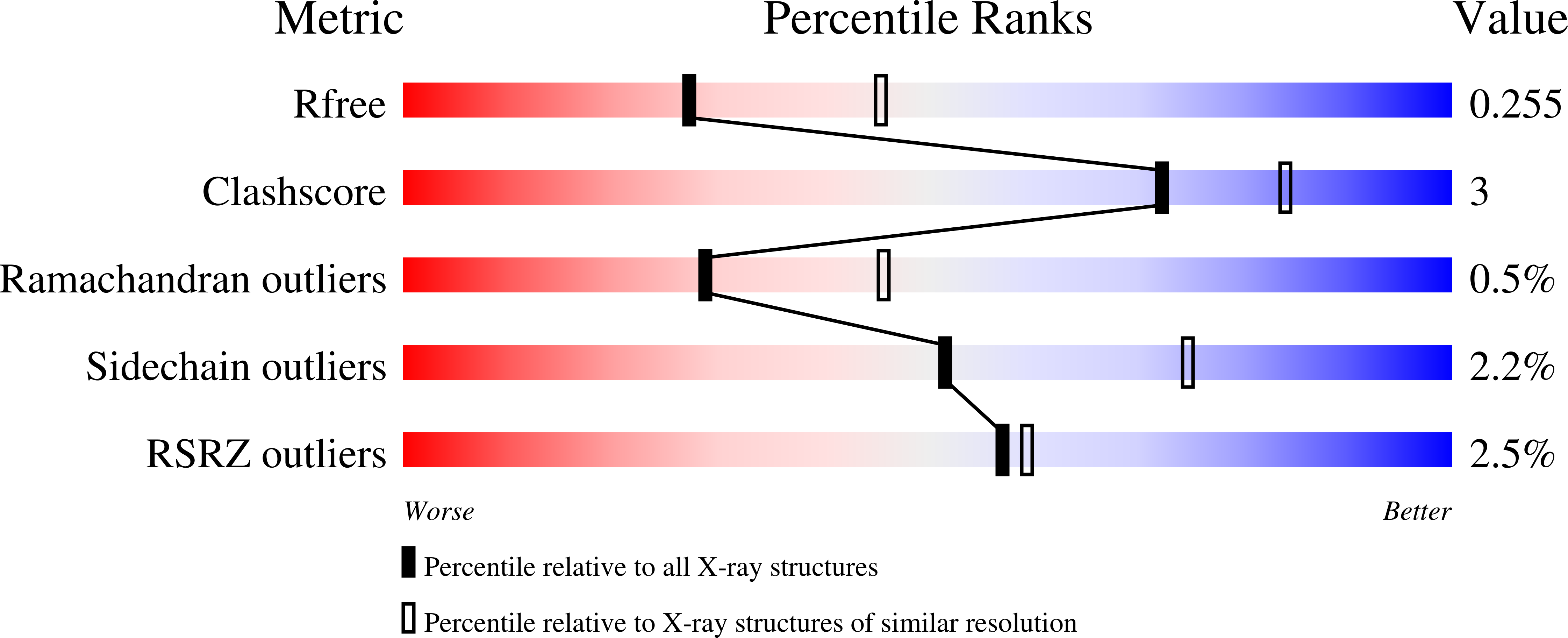
Deposition Date
2024-04-25
Release Date
2024-05-29
Last Version Date
2024-10-16
Entry Detail
PDB ID:
9BJU
Keywords:
Title:
Crystal structure of the complex between VHL, ElonginB, ElonginC, and compound 5
Biological Source:
Source Organism:
Homo sapiens (Taxon ID: 9606)
synthetic construct (Taxon ID: 32630)
synthetic construct (Taxon ID: 32630)
Host Organism:
Method Details:
Experimental Method:
Resolution:
2.47 Å
R-Value Free:
0.25
R-Value Work:
0.21
R-Value Observed:
0.22
Space Group:
P 41 2 2


